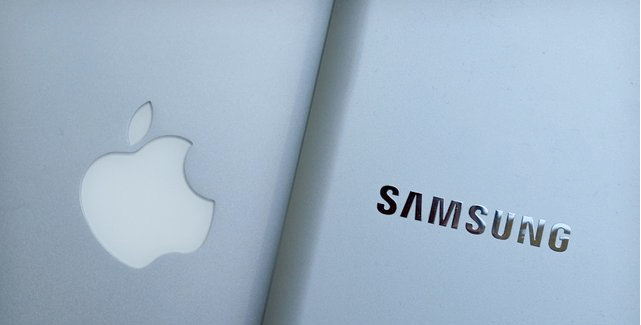Steven Jin
With a new iPhone and dozens of new Samsung Galaxy models being released every year, choosing a device out of the myriad of options can be daunting.
About ten years ago, Nokia was the dominant phone distributor, accounting for about 38 percent of the market. More recently, Samsung (20.9 percent), Apple (12.1 percent), and Huawei (15.8 percent) combined to hold the majority shares in the fourth quarter of 2018. In the U.S. specifically, Apple and Samsung dominate, commanding 40 percent and 20 percent of shares respectively.
With recent controversy over planned obsolescence, a policy of producing goods that require frequent updating and replacing, consumers may think twice about buying a particular phone, especially from the main culprits Apple and Samsung, who were recently fined for this business practice. However, despite shady business practices, the attractive features of an iPhone or Samsung Galaxy often outweigh the negatives for many consumers.
The original iPhone (also known as iPhone 2G), the first of its kind, sported a 620 MHz processor, 128 MB of RAM, up to 16GB of storage space, and a two megapixel rear camera. It has since evolved into the most recent iPhone rendition, the iPhone XR, which has a 2.49 GHz processor, 3 GB of Random Access Memory (RAM), up to 256 GB of storage space, and a 12 megapixel rear camera.
Unlike its predecessors, the iPhone XR potentially, through specific carriers such as Verizon, drops to nearly half the price of the iPhone XS ($749 to $1449). From an economic perspective, the iPhone XR may be the most “bang for buck” name brand smartphone on the market because it offers most of the features of previous iPhones at a fraction of the price.
In this sense, the XR is the more affordable variant to the XS, but “definitely feels consistent with the quality Apple has had over the years,” said Davis Kelly, third year Slavic studies major.
Samsung’s equivalent to the iPhone XR, the Samsung Galaxy Note 9, features relatively similar performance specs. Both devices have similar central processing units (CPU), camera pixel size, and storage specs, with the Galaxy Note 9 just barely beating out the XR in RAM (carrying both 6 and 8 GB variants, offering flexibility for power users and casual users).
“It’s basically another computer, but in the size of an even smaller tablet,” said Alexandra Larionova, a third year mechanical engineering major. However, one drawback to the Note 9 is that it is expensive, with prices starting at wallet-flattening $1000 for the base model.
Comparing the two, the iPhone XR floats around the range of a mid tier phone, characterized by its affordability paired with its decent performance. In contrast, the Samsung Galaxy Note 9 feels more like a luxury phone, with marginal benefits for a higher premium.
However, the average consumer may hesitate to spend $750 on a smartphone, especially with the previously mentioned planned obsolescence at play.
Although many consumers choose to purchase devices from dominant companies like Apple and Samsung, straying from the mainstream may have financial benefits. Huawei, a thirty-year-old company from China is surging to compete with Apple and Samsung. Their phones, on paper, surprisingly bring the same, if not better, performance to the iPhone and Samsung Galaxies (such as equivalent levels of RAM, and even better camera megapixels).
Huawei also brings in high quality materials to their phone build. The most surprising aspect, however, is their price range, with equivalent phones costing between $200-$300. The only thing they do lack is the established reputation of an Apple or a Samsung, being an overseas company that lacks exposure in the United States.
Samsung and Apple both have tried and true reputations based on quality. Huawei is an up and coming competitor, producing quality products at the fraction of the cost. Whether it’s time to upgrade or replace a broken phone, there can be no wrong way to go about it.












I am regular reader, how are you everybody? This paragraph
posted at this website is genuinely good.
I will go for Huawei over the adavantage of price. You can almost get the same features & quality as iPhone & Samsung in less price.
Comments are closed.